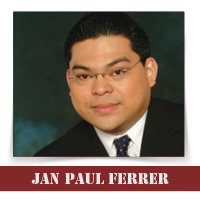By: Jan Paul C. Ferrer
Many of us find ourselves with a traditional IRA here, a rollover IRA there, four job changes (so far!) and three retirement plan account balances left in the plans of former employers.
Over the years, people may accumulate a significant sum in retirement savings, often spread across various accounts. As accounts multiply and companies change ownership, it can become difficult to keep track of exactly how much you have saved toward retirement and how those funds are invested. You may also find it challenging to determine your distribution requirements on various accounts once you turn 70 ½.
Consolidating accounts can help you make sure your savings are invested appropriately for your overall goals, track the performance of your holdings and, in some cases, discover more investment choices and incur lower fees.
With retirement savings in just a few accounts, it becomes far simpler to execute your strategy and to measure your progress.
WHAT ARE YOUR OPTIONS?
Typically, if you are a plan participant leaving an employer, you will have the following choices. You may engage in a combination of these, depending on your employment status, age and the availability of the particular option.
1. Cash out the account value and take a lump sum distribution from the current plan subject to mandatory 20% withholding, as well as potential taxes and a 10% penalty tax; OR continue tax deferred growth potential by doing one of the following:
2. Leave the assets in the former employer’s plan (if permitted)
3. Rollover the retirement savings into the new employer’s qualified plan, if one is available and rollovers are permitted
4. Rollover the retirement savings into an IRA
A plan participant receiving an eligible rollover distribution from a qualified retirement plan also has the optio n of rolling his or her retirement savings over to a Roth IRA. However, the taxable portion of such rollover is includable in the participant’s income for the year of the qualified plan distribution. The tax rules that apply to a Roth IRA (e.g., required minimum distribution rules, taxation of distributions, etc.) differ from the rules that apply to a traditional IRA and are beyond the scope of this article.
WHY CONSOLIDATE?
Streamlining the account structure of your retirement savings has many potential benefits.
Comprehensive investment strategy. Over time, your investment objectives and risk tolerance may have changed. Thus, it may be difficult to maintain an effective retirement investment strategy—one that accurately reflects your current goals, timing and risk tolerance— when your savings are spread over multiple accounts. Once you begin the consolidation process, you can strategize investments to match your current goals and objectives.
Potentially Greater investment flexibility: Often, 401(k) plans, other employer-sponsored retirement programs and even some IRAs have limited investment menus. Some IRAs may offer greater control, more options or expanded diversification when compared to employer plans and other IRAs, but on the other hand they might not offer the same options. Whether a particular IRA’s options are attractive will depend, in part, on how satisfied you are with the options offered by your former or new employer’s plan.
A Morgan Stanley self-directed IRA can offer you the ability to choose from a wide range of investments including stocks, bonds, mutual funds, and more.
Simplified tracking: It is easier to monitor your progress and investment results when all your retirement savings are in one place. By consolidating your accounts, you will receive one statement instead of several. That simplifies your life while protecting the environment.
Customized service levels: Some employer plans also provide access to investment advice, pla nning tools, telephone help lines, educational materials and workshops. Similarly, IRA providers including Morgan Stanley offer different levels of service, which may include full brokerage service, investment advice and distribution planning.
Monitoring costs: Reducing the number of accounts may impact account fees and other investment charges. Generally speaking, both employer-sponsored qualified plans and IRAs have plan or account fees and investment-related expenses. However, in some cases, employersponsored qualified plans may offer lower cost institutional funds, and in some cases may pay for some or all of a plan’s administrative expenses. Generally, fees associated with an IRA may be higher than those associated with a plan, but consolidating multiple IRAs may reduce your overall expenses.
Penalty tax-free withdrawals: Generally IRA owners can take distributions penalty tax-free once they attain age 59 ½. Qualified plan participants between the ages of 55 and 59 ½, once separated from service, may be able to take penalty tax-free withdrawals from the qualified plan. Clear required minimum distributions (RMDs): Once you reach age 70½, having fewer retirement accounts to manage can mean having fewer RMD requirements to follow.
Comprehensive knowledge of your assets. If your employer-sponsored retirement plan is terminated or abandoned (an “orphan plan”) or is merged with or transferred to a retirement plan of another corporation after you leave, it may be difficult to locate the plan administrator to request a distribution of your benefits or to change investments. By contrast, assets in an IRA are always accessible if you want to change your investment strategy or need to take a distribution.
Listed below are types of retirement accounts potentially eligible for consolidation.
• IRAs held at financial institutions (banks, credit unions, mutual fund companies, etc.)
• Retirement plan assets held at former employers including:
 VIA Times – February 2015 Issue Vital News, Vibrant VIews for Asian Americans in Chicago & Midwest
VIA Times – February 2015 Issue Vital News, Vibrant VIews for Asian Americans in Chicago & Midwest




